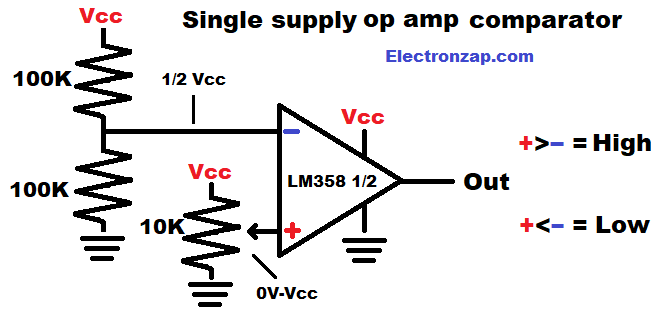Table of Contents

Comparator circuits look at 2 separate input voltages applied to 2 separate inputs. The output state (high or low) is determined by which input has a higher voltage.
The output goes high (as close to the supply voltage as the circuit can provide) if the non inverting (+) input voltage is higher than the inverting (-) input voltage.
Output goes low (as close to the negative supply voltage as the circuit can go) when the + input has a lower voltage than the – input.
When it comes to being high or low, the output is always more like the + input compared to the – input.
Video:
To support this site, check out the following links:
- Become a Patron!
- Check out my YouTube videos! https://www.youtube.com/c/Electronzap/videos
- Products I used in my videos or otherwise think look like a good buy. As an Amazon associate, I earn from qualifying purchases. https://www.amazon.com/shop/electronzapdotcom
- Information on this site is not guaranteed to be accurate. Always consult the manufacturer info/datasheet of parts you use. Research the proper safety precautions for everything you do.
- Electronzap is a participant in the Amazon Services LLC Associates Program, an affiliate advertising program designed to provide a means for sites to earn advertising fees by advertising and linking to amazon.com.